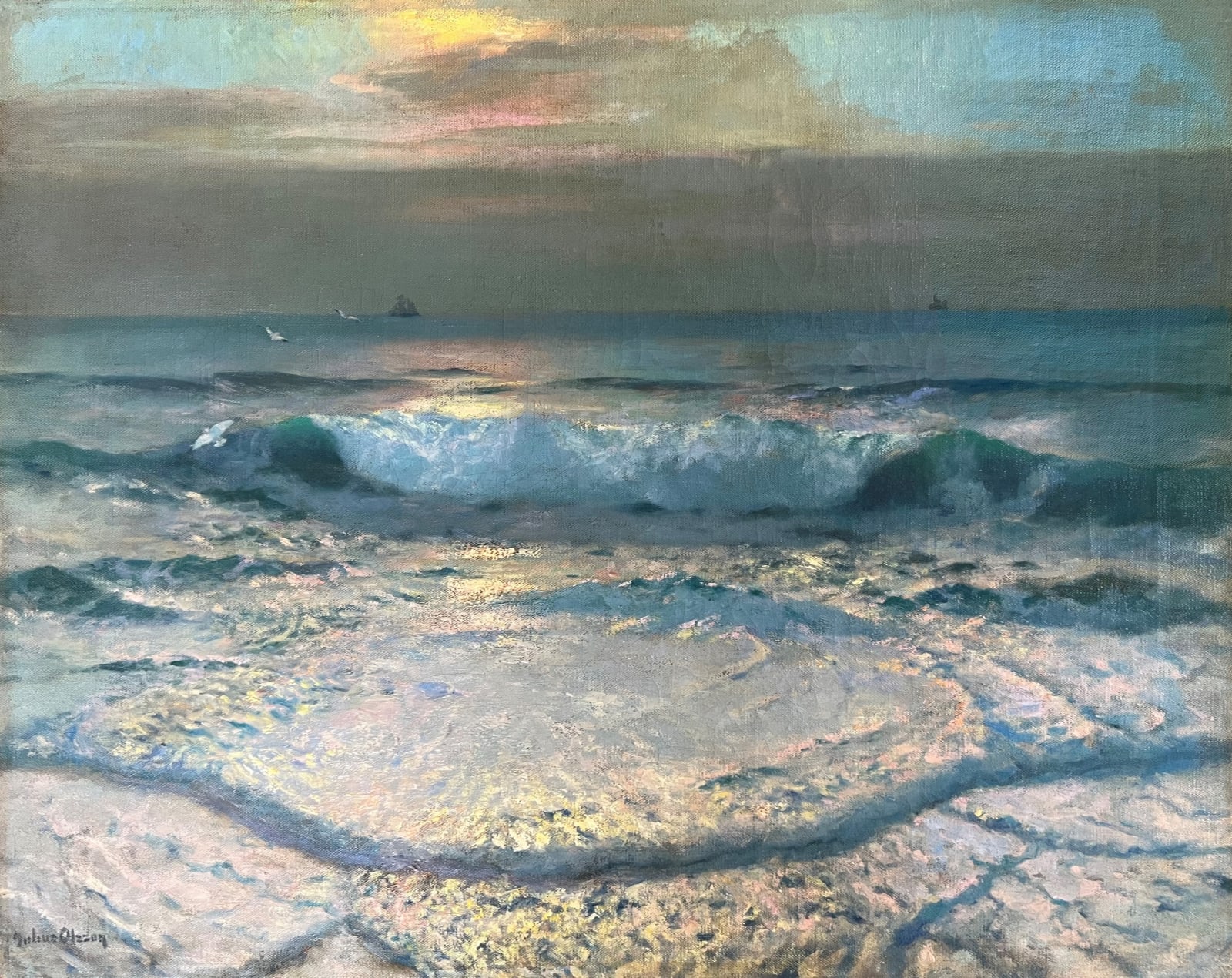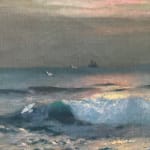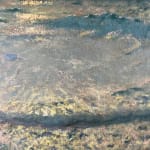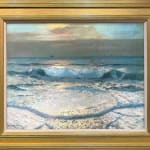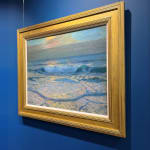Julius Olsson 1864-1942
Framed: 83.8 x 99.0 cm (33 x 39 ins.)
Further images
Provenance
Christie's, South Kensington, Victorian, Pre Raphaelite & British Impressionist Art, July 2015.
Private UK collection
Evening shipping across Carbis Bay is a mature work by Julius Olsson. In this piece the artist once again leaves us marvelling at his ability to capture in oil paint a millisecond’s drama and kaleidoscope of light and shadow in crashing waves and explosive surf. The qualities required to paint such a work are probably best expressed by the man himself: ‘… for one whose heart draws him to the sea must, in the first place, have an exceptionally retentive memory, and be able to grasp in a few moments the effect of the ever-changing movements of the sea and sky; he must have a delicate and subtle sense of colour, and have the ability to place the main features of his impression of the subject on the canvas with a few strokes of the brush, and, besides this, he must be prepared to fight the brave fight with the elements, which will be frequently against him.’ (Olsson’s forward to ‘The Technique of Seascape Painting’ by, Borlase Smart).
The Clouded Moon in the Glasgow Museums collection, presents a similar handling of the approaching and retreating waves.

